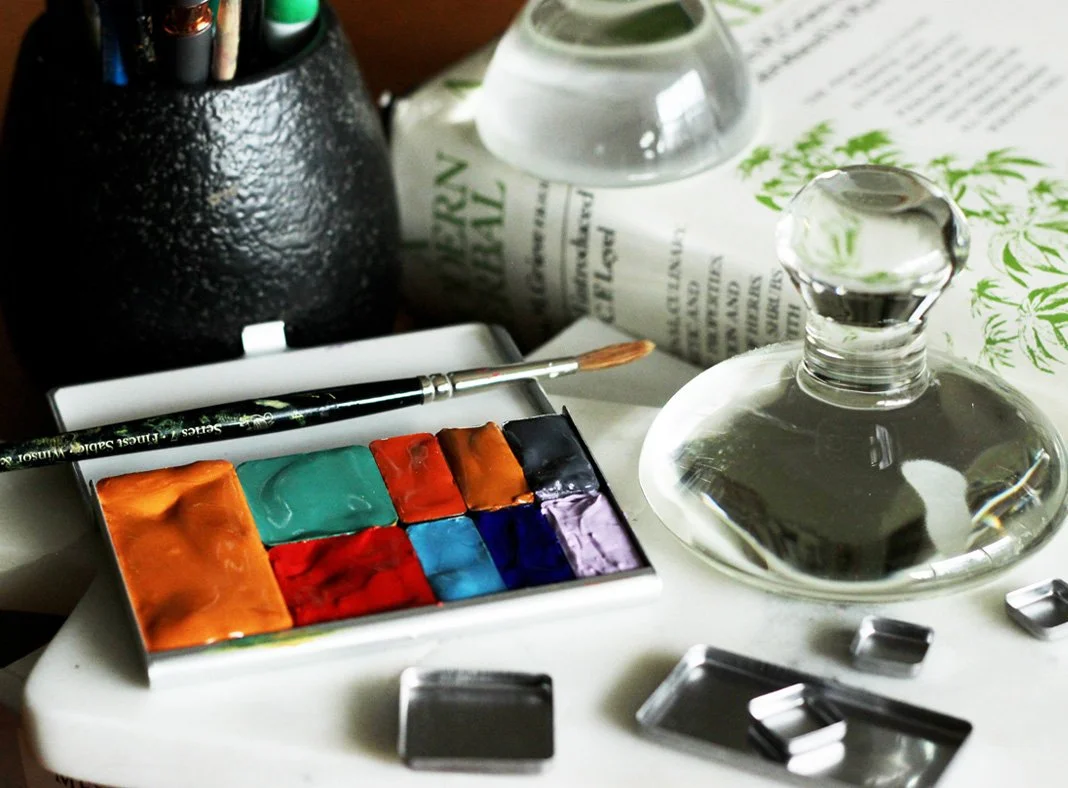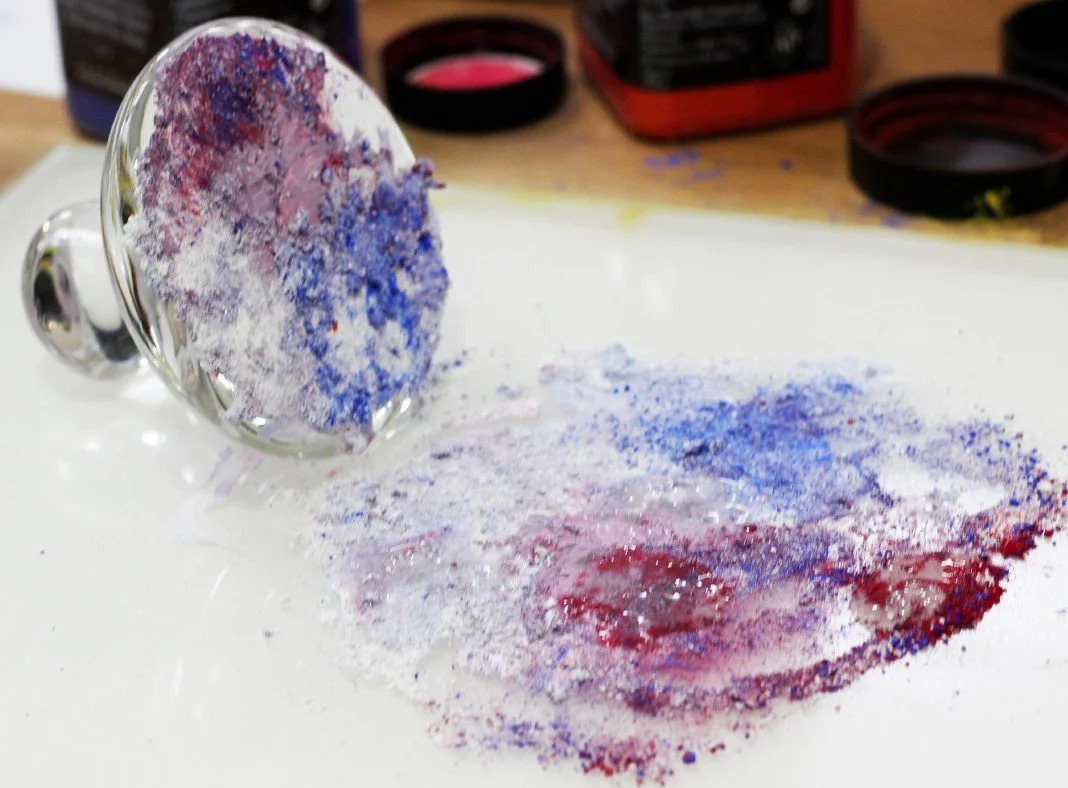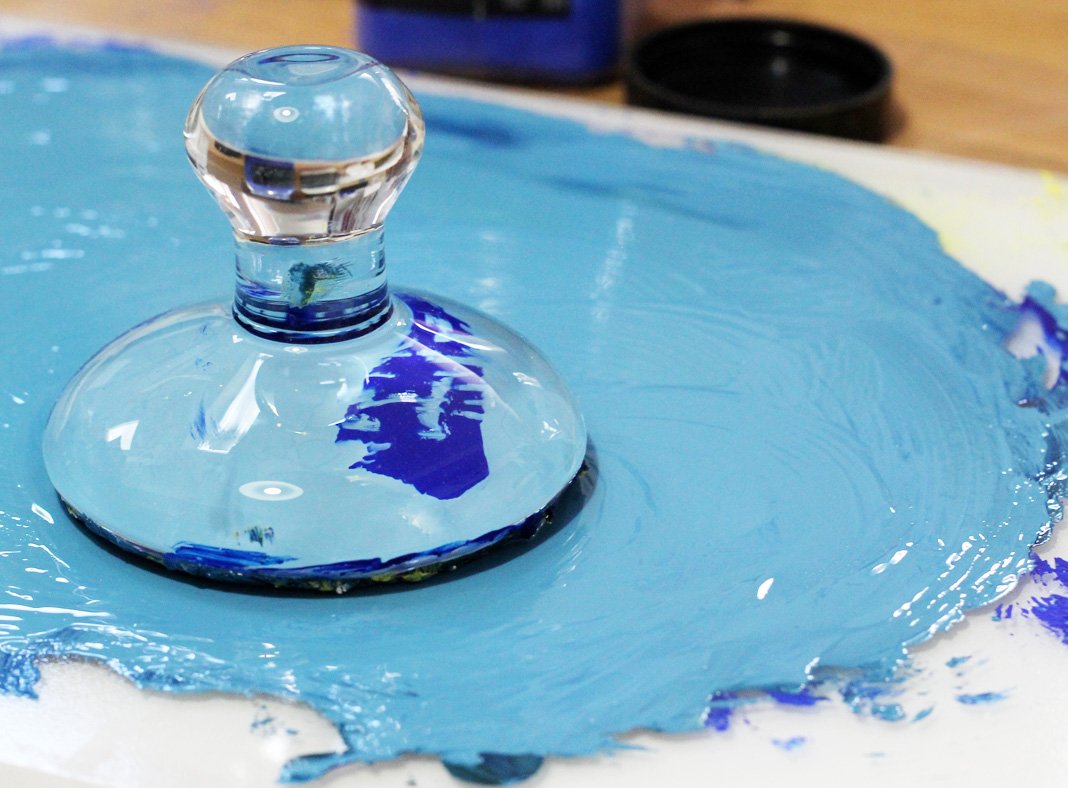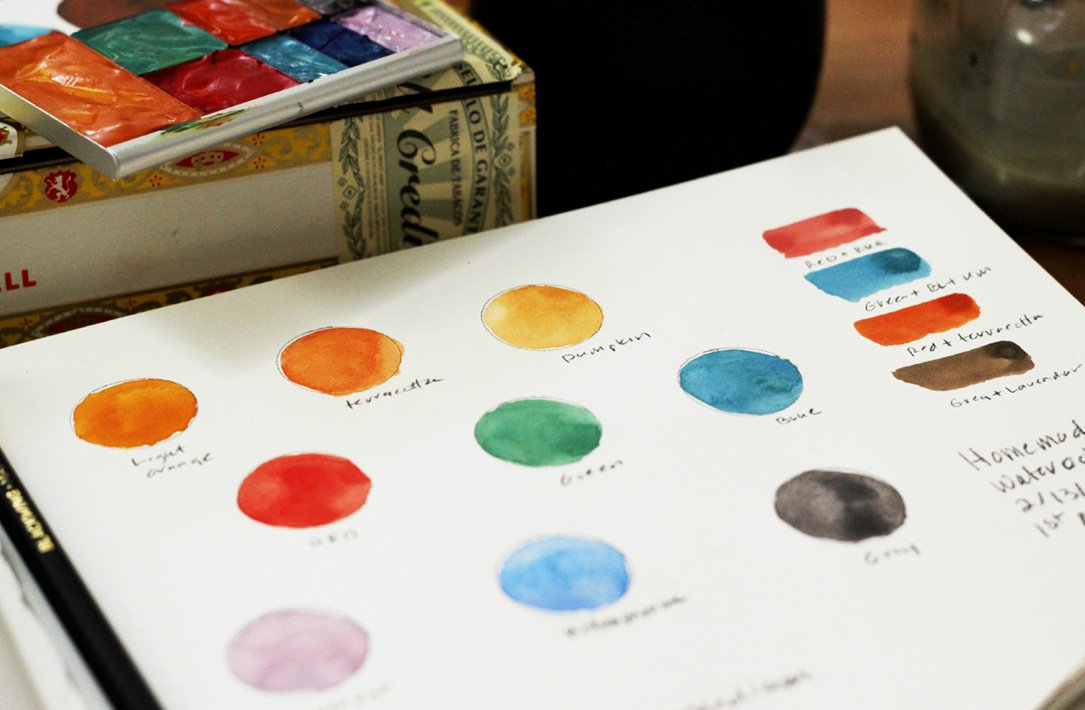Handcrafted Watercolor Paints
Watercolors made 'in house'
A few weeks ago I ran across the Kramer Pigments website and found myself on their 'recipes' page.
If you like the idea of making your own artist materials - be it gouache, watercolors, inks etc, do head over there (link at end of post).
After spending time looking through the paint recipes I decided, why not? I'll give it a go.
Now, first off, if you think you'll be saving a lot of money by making your own supplies, that might or might not end up being the case.
For sure if you are making a substantial amount of paint you will.
But remember, pigments are expensive, each color varies in price depending upon what the pigment is made from and how rare it is.
And if you're making your own pigments I'm presuming you want them to be good quality, otherwise, you really are not going to be saving money because there are a ton of inexpensive materials out there and even the good companies that produce quality materials usually have a 'student grade' line to use while you're learning.
But that aside, yes, pigments can be costly.
However, if you're like me and feel like mixing your own colors is something you would like to do, then read on.
Glass muller on glass surface and pigment about to be mixed with a few drops of watercolor medium. This will end up being the lavender in my watercolor box.
Glass muller on glass surface and pigment about to be mixed with a few drops of watercolor medium. This will end up being the lavender in my watercolor box.
The recipes are fairly simple for watercolor, especially if you buy watercolor medium (which they sell), it's really just a matter of having the right equipment.
To make watercolors you need:
Dry pigment
Watercolor Medium (this is the liquid binder)
A glass tray
A glass muller - you could use a mortal and pestle but I've only ever seen a muller used to smooth the pigments. Using a muller will also make you feel like a real paint maker - it reminds me a bit of tempering chocolate using the marble slab method.
Here the pigment is being blended, this is ultramarine pigment with white.
Here the pigment is being blended, this is ultramarine pigment with white.
You begin by measuring about 1-3 tsp of dry pigment and then adding a few drops of the watercolor medium. You can also make your own medium with Gum Arabic, but I opted to buy this ready made.
On the Kremer Pigments website, it gives recipes for both, so if you do want to make your own you can.
There's a bit of trial and error involved because different pigments require more or less medium. You can also test them and if there's chalky reside on the top when dry then you need more medium. Or, dry slightly tacky to the touch, you need less medium or more pigment.
Once you've combined pigment with medium, you can either mix your colors in a mortar and pestle or use a glass muller, such as the one shown above. Mullers are very easy to use. You need a tempered glass surface to smooth and blend, I happened to have a smooth glass cutting board which worked perfectly.
One thing that surprised me was how much pigment I used for what I perceived to be little paint. However, when I went to fill my pans, there was enough. The hardest thing was getting the paint into the pans.
A good palette knife will work, but I found a bent piece of cardstock (like a business card) worked well for me to scrape up and then scrape into the watercolor pan.
This how my paints looked on paper. I was really quite pleased.
One other thing - if you want that smooth, picture perfect look of filled watercolor pans without any cracking, you need to fill your pans in layers. Meaning - you need to put a thinnish layer in the pan, let it dry, and then put more in.
Personally, I didn't do this, I didn't have time and I wasn't sure how my paint would store while I was waiting for the first layer to dry.
The empty watercolor pans I used are very thin anyway, compared to the regular half-pans readily available at the art store, so while 2 of my colors did show cracking, the others didn't.
If you it bugs you though, you'll have to layer and wait and re-layer.
You can get started with the recipe hints I gave, but I would also recommend visiting the Kramer Pigments website, they have a lot of info and you can find the materials you need to begin making your own paints.
I'm also including a link to the Art Tool website where I bough my metal watercolor pans and the case. The case is magnetic and you can try all different configurations with your pans.
Happy paint-making!




